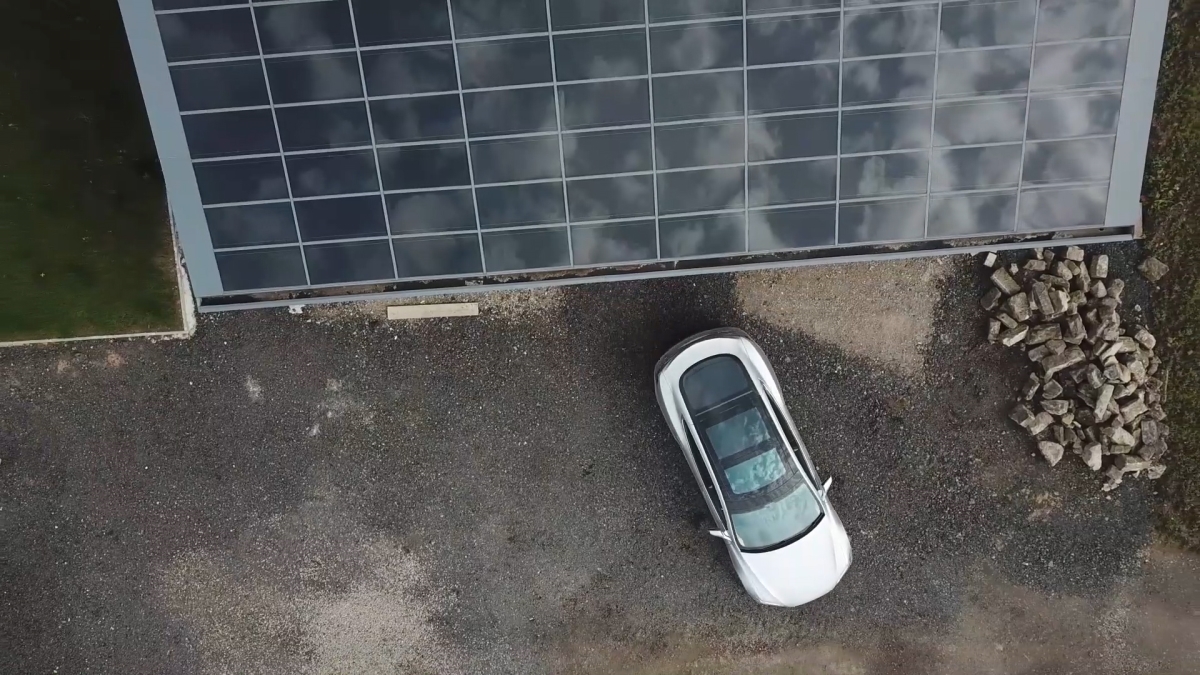Frequently asked questions
Yes – we can double or triple glaze using standard techniques and including inert fillings as required.
Polysolar glass (PS-CT) blocks virtually all ultraviolet (UV) light.
From an infrared (IR) perspective, the amount blocked depends on the transparency. It is low-e glass due to:
1. The layers that it is made of,
2. The shading produced by the photovoltaic layer, and
3. The photovoltaic layer absorbing infrared electricity.
Yes, if you are looking for a particular aesthetic then we can apply patterns, logos or more traditional building textures to glass. We have a range of patterns or textures that can change the look of our solar pv glass including: concrete, wood, rust, brick, marble, anthracite, black, grey and white.

Our glass reduces heat gain/loss in buildings to a g-value ≈ 0.24 for single glazing and u-value ≈ 1 W/m²K for double glazed units.
It is low-e glass due to the layers.
Yes, however these can be difficult to connect electrically. We would recommend using as many standard shapes as possible and having non-standard shapes as dummy panels.
Yes, we can provide small samples of either 150 x 150 mm or 300 x 300 mm in varying transparencies. These are offered on a paid for or deposit scheme.
Yes – we can supply transparent panels with coloured layers, or opaque panels with a colour to the outside. This will affect performance however this will be less than a 5% reduction. The closer to white the colour is, the more impact it will have on the performance.
Currently due to wiring constraints this is not possible.
In theory, yes, however due to the mixed sizes of domestic home windows and the requirement for opening we do not find it to be cost effective.
We try to limit projects to standard sizes as much as possible to keep the costs down, however as a general rule we can manufacture up to 3 x 2 m. Large panels tend to lead to increased transportation and handling costs. See our specification page for standard sizes.
As a solar manufacturer we are committed to improving our environment and reducing the impacts of climate change.
We aren't able to provide an Environmental Product Declaration (EPD) for our PS-CT panels currently. Our PS-MC panels are cradle-cradle certified and we are able to provide some information.
Please contact us for more information on our supply chain policies.
No – we manufacture glass units in which the active solar layer is encapsulated between panes of glass.
We are researching film options though. Watch this space!
We manufacture in standard sizes to minimise costs and standardise as much as possible. Non-standard sizes are available on request however please bear in mind logistical requirements such as shipping and manual handling. Panels cannot be cut to size on site due to tempered glass being used in their construction.
This depends on the length and width of the glass. Larger panes will require thicker glass.
Our standard sized PS-CT series glass is 7.1mm for single glazed.
Double glazed thickness for a standard PS-CT is 29.1mm made up of 7.1mm solar glass + 16mm argon + 6mm back glass
